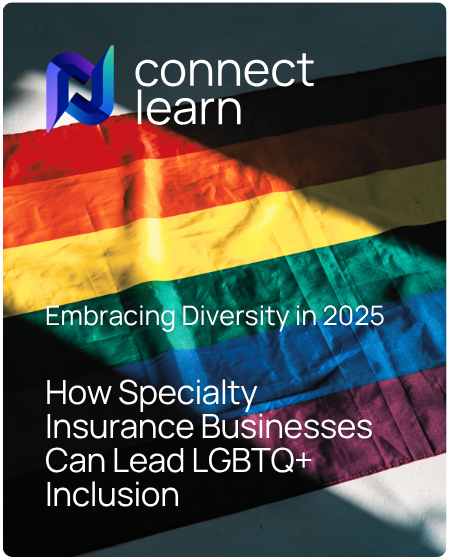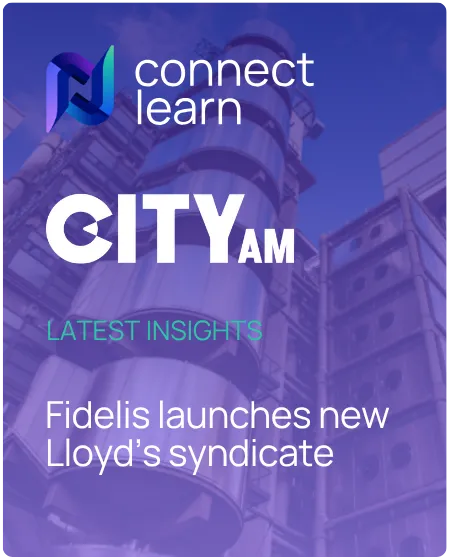The London Market and wider Specialty Insurance sector are recognised for their global influence and deep-rooted heritage. But real leadership today goes beyond financial success and market position – it’s also about building workplaces where people feel respected, supported, and able to thrive, regardless of their sexual orientation, gender identity, or expression.
International Day Against Homophobia, Biphobia, and Transphobia (IDAHOBIT) is a vital reminder that for LGBTQ+ communities, inequality and exclusion remain everyday realities. From discriminatory policies to unconscious bias, the challenges are still there – and organisations across our sector have a responsibility to respond.
At Nexus Connect, we’re proud to work with clients who are actively driving change – embedding inclusion into their people strategies and day-to-day culture. This year, we once again spoke with the team at Pioneer Search, a recruitment firm specialising in tech, projects, and transformation hiring within the London Market. Their work with forward-thinking businesses has given them unique insight into what’s working when it comes to LGBTQ+ inclusion – and where there’s still room to grow.
Research has shown that inclusive and supportive workplaces tend to have higher levels of employee satisfaction, productivity, and overall success. By taking meaningful action to create a more inclusive environment, employers can not only support their LGBTQ+ employees but also benefit from being able to attract and retain a more diverse and innovative workforce.
So, how can the London Market and Specialty Insurance businesses heed the call of IDAHOBIT and commit to creating a more inclusive workplace for LGBTQ+ employees?
Below, the team at Pioneer Search share the initiatives and approaches they’ve seen their clients take to support and embrace LGBTQ+ employees – along with key steps that are helping to drive real change in 2025:
1. Visible, Active Leadership
It starts from the top. Leaders who visibly support LGBTQ+ inclusion – whether by advocating for policy updates, taking part in Pride, or calling out harmful behaviours – set the tone for their whole organisation. Back this up with proper education: Pioneer recommends training management teams to understand the barriers LGBTQ+ individuals face, and how to champion inclusivity within their teams.
2. Clear and Inclusive Policies
Despite progress, discrimination and harassment are still present in workplaces. Having comprehensive, up-to-date policies that explicitly protect LGBTQ+ employees is non-negotiable. These policies should define respectful behaviour, outline clear reporting procedures, and be reviewed regularly to ensure they reflect the current needs of your people.
3. Training and ERGs
Raising awareness and breaking down biases takes work. Regular training sessions focused on LGBTQ+ inclusion can be powerful, particularly when they’re interactive and built around real experiences. Employee Resource Groups (ERGs) – like LGBTQ+ networks and ally programmes – also create safe spaces and give underrepresented voices a platform.
4. Collaboration with LGBTQ+ Organisations
Some of the most successful D&I initiatives have been developed in partnership with external LGBTQ+ advocacy groups. These partnerships bring in specialist knowledge, training, and lived experience. But it’s not just about bringing in outside voices – organisations should also give their own LGBTQ+ employees the opportunity to shape internal initiatives and drive meaningful change.
5. Genuine Celebration of Diversity
Celebrating LGBTQ+ inclusion shouldn’t be a once-a-year marketing activity. It should be baked into your culture. Whether that’s hosting awareness events, participating in Pride, or sharing employee stories, authenticity matters. As Pioneer notes, people can spot tokenism – so if you’re getting involved, make sure it’s backed by action.
6. Inclusive Benefits
Benefits packages should reflect the needs of all employees – and that means ensuring equal access to healthcare, parental leave, and family policies regardless of sexual orientation or gender identity. Inclusive policies around transitioning at work and mental health support are also key areas of focus for many of Pioneer’s clients.
7. Supplier Diversity
Inclusion shouldn’t stop at internal teams. Pioneer has seen more organisations extending their diversity commitments to supplier relationships too – working with partners that align with their values. For example, Pioneer’s own team proudly reports that over 41% of all placements made by their IT, Projects, and Transformation recruiters in the last two years identify as female – showing that inclusive hiring is possible at scale.
8. Data and Accountability
Real progress relies on transparency. Collecting data on employee demographics, retention, and progression – with a specific focus on LGBTQ+ inclusion – helps businesses track what’s working and where more effort is needed. Sharing that data internally and being open about areas for improvement builds trust and drives accountability.
----------
Sharing success stories and best practices can inspire other companies to follow suit in advancing LGBTQ+ inclusion and diversity. Some companies are already making great strides towards creating a more inclusive workplace. View the 2025 Corporate Equality Index and Equality 100 Award recipients here. https://www.hrc.org/resources/corporate-equality-index
There is still much to be done to create an inclusive and equitable workplace. By embracing the principles of IDAHOBIT and implementing these key initiatives, London Market and Specialty Insurance businesses can lead by example to drive positive change within the industry and beyond.














